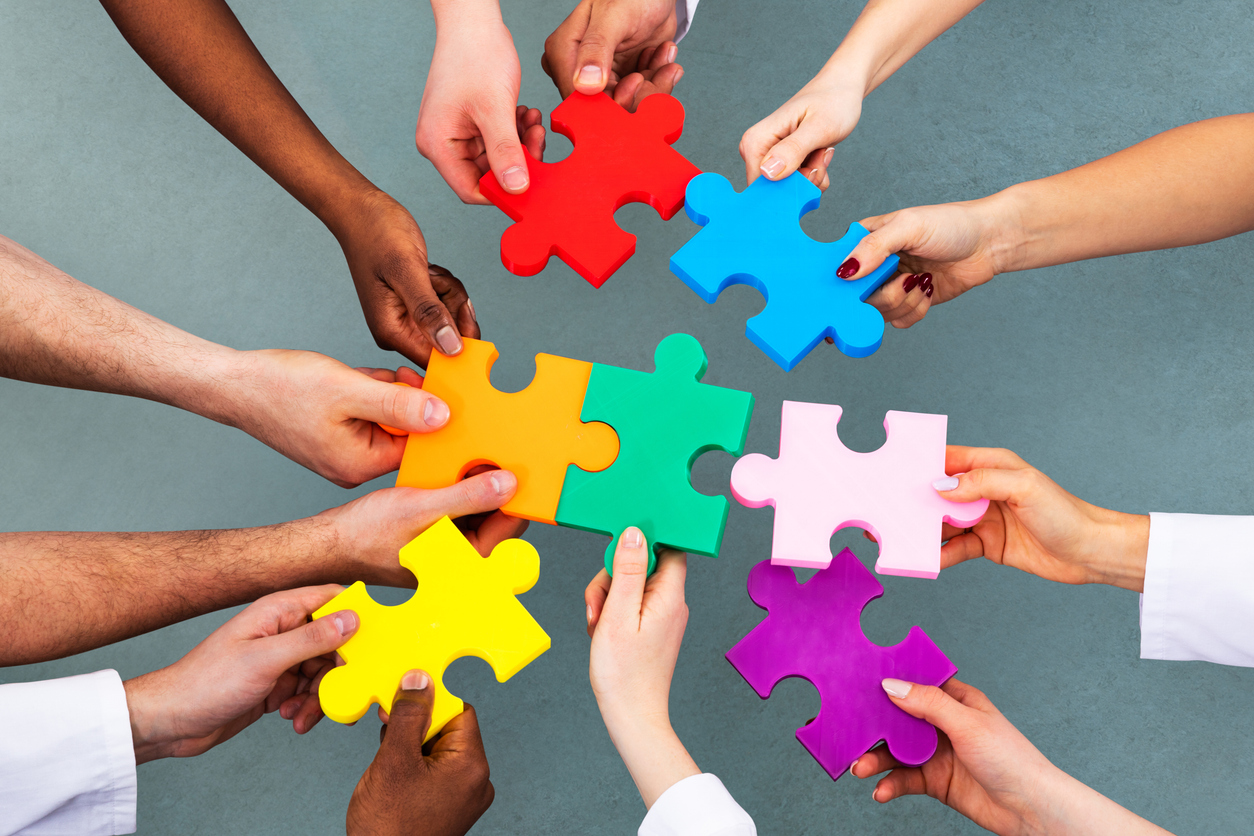The work continues: Navigating changing language and attacks on DE&I programs
Even with shifts in wording, DE&I work remains as meaningful as ever.

At its root, DE&I (diversity, equity, and inclusion) initiatives in the workplace are meant to foster a diversity of thought and experience across cultures and identities that help the organization mirror the makeup of its audiences and stakeholders.
But in a time when politicized accusations of “going woke” and “DE&I hires” have caused some companies to abandon their DE&I work entirely, others are understanding how the language they use to describe the work can change while they stay the course.
Gone are the days when a canned intranet post about Juneteenth can be received as sincere or having any real impact. In that same vein, generalized language usually isn’t going to hit the mark either.
A refocus on specificity in comms
As with many things in the business world, shifting DE&I language is natural and necessary as its scope and purpose have changed. This reflects a more thorough understanding of the systemic issues that DE&I communications seek to address —more apt language helps make actionable change easier to accomplish.
According to Amira Barger, executive vice president and head of DE&I communications at Edelman, savvy communicators have stayed the course with language that better fits their missions despite a small but vocal group of voices opposing DE&I work.
“Language in DE&I work is evolving to become more inclusive, precise, and action-oriented,” she said. “As practitioners, we are moving away from general terms like ‘diversity’ and ‘inclusion’ to more specific language such as ‘equity,’ ‘belonging,’ and ‘anti-racism.’”
Barger cited the 2024 Edelman Trust Barometer, which found that 76% of respondents said organizations should respond when DE&I initiatives are attacked internally or externally, while 67% reported being concerned about systemic racism and its impacts on society in the United States.
“This highlights the urgency and importance of our work,” Barger said. “Clear and precise language helps organizations set more tangible goals and measure progress more effectively, ultimately driving meaningful impact.”
How inclusive language connects workforce needs back to the business
With Edelman’s data showing that there’s still support for DE&I campaigns, communicators must consider the path forward. That means taking steps now to create an equitable workplace in the future.
Sabrina Steele, executive director of the corporate affairs and communications division at The Aerospace Corporation, continues this work through the nonprofit’s Space Workforce 2030 Program. The initiative “outlines achievable goals for inclusivity and demonstrates our commitment to measuring progress towards these goals,” according to the Workforce 2030 website.
Workforce 2030 originated after a reconsideration of inclusivity priorities following the murder of George Floyd in 2020. Framing this work as a workforce imperative, rather than a DE&I program, allows room to focus conversation on the needs of the business. “Space Workforce 2030 spun off from those discussions and the need to do the right things from both a human and business perspective,” Steele said.
This reevaluation and transition to Workforce 2030 revealed that there wasn’t a large number of women in the pipeline for STEM careers. Additionally, Steele’s team found that major aspects of diversity came in “diversity of experience”, including demographics like first-generation college students.
These multiple touchpoints formulated a need for more specific language as the organization aimed for a more inclusive future.
“We use the right terms when they’re relevant — the term ’underrepresented’ is more of a catch-all and relates to more demographics, so we’ve leaned into that more recently,” Steele said. “We need to cultivate different perspectives and show you that you belong, and language helps do that.”
Setting up DE&I comms for tangible impact
As language about DE&I work shifts and changes, remember that your efforts don’t happen in a vacuum — they’re part of a larger push for positive change.
“DE&I work is a journey, not a destination — it requires continuous learning, adaptation, and commitment,” Barger said. “We must remain open to feedback, willing to address our own biases, and dedicated to creating environments where everyone can thrive.”
When implementing new and shifting language in DE&I comms, Barger added that communicators should measure their success and be willing to adapt based on feedback to achieve resonant results.
“Let’s remember that DEI is not about compliance or checking boxes,” she said. “It’s about fundamentally transforming our workplaces and societies to be more just and equitable.”
Sean Devlin is an editor at Ragan Communications. In his spare time he enjoys Philly sports and hosting trivia.







